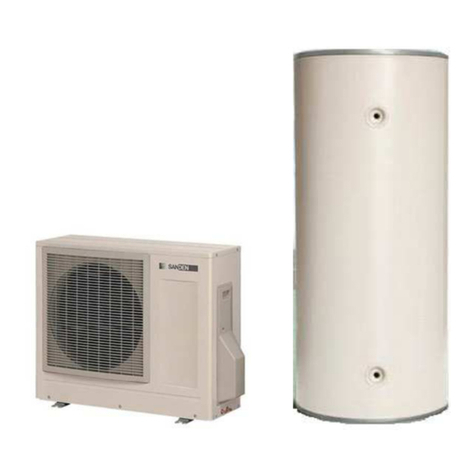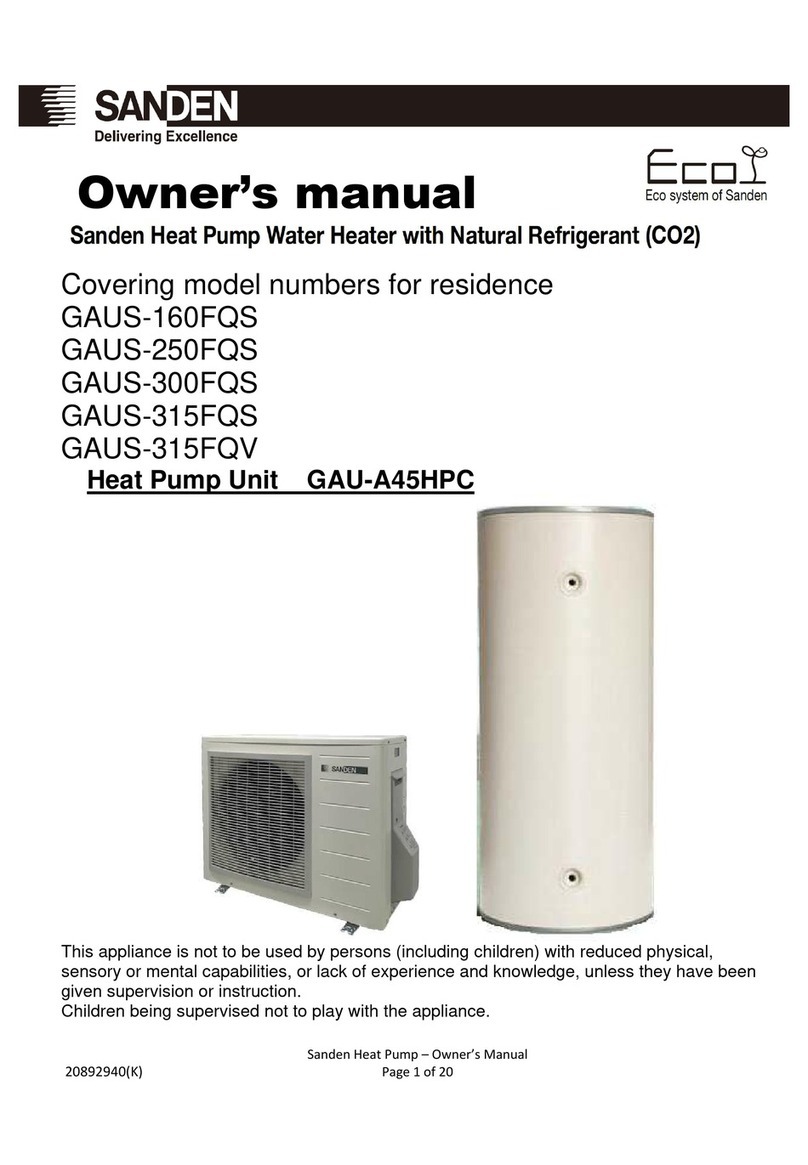SandenHeatPump–InstallationManual
Page2of36
Contents
Page title..............................................................................................................................1
Contents ..............................................................................................................................2
Introduction..........................................................................................................................3
How it works ........................................................................................................................3
Installation details................................................................................................................4
Installation location..............................................................................................................5
Heat pump Unit Installation..................................................................................................6
Water Piping Installation – Heat Pump Unit & Tank.............................................................7
Heat Pump Unit Water piping ..............................................................................................9
Mains Power/Electrical Installation ....................................................................................10
Electrical connections........................................................................................................10
How to connect Main Power..............................................................................................10
How to connect Tank thermistor cable to Heat Pump unit.................................................12
System operation using continuous Power Supply............................................................13
System operation if connected to Demand Response Power............................................13
Filling the System & Purging Air ........................................................................................15
Freeze protection...............................................................................................................16
Time setting.......................................................................................................................17
Controller Operation ..........................................................................................................19
Commissioning Mode ........................................................................................................19
How to switch to Commissioning Mode .............................................................................19
Error Codes .......................................................................................................................24
Water Supply Quality (Supplemental)................................................................................26
Change of water supply.....................................................................................................27
Technical data ...................................................................................................................28
Warranty Policy..................................................................................................................32
Warranty period.................................................................................................................33
Check sheet.......................................................................................................................34
Replace controller assembly..............................................................................................35
Memo.................................................................................................................................36
PATENTS
This water heater may be protected by one or more patents or registered designs
in the name of Sanden International (USA), Inc.
TRADE MARKS
® Registered trademark of Sanden International (USA), Inc.
Note: Every care has been taken to ensure accuracy in preparation of this publication.
No liability can be accepted for any consequences that may arise as a result of its application.


































